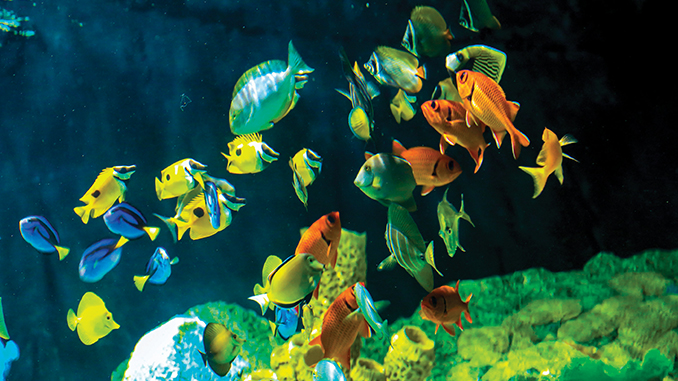
“Life is Amazing”
Published: December 29, 2020
By: Carol Muse Evans
The Cook Museum of Natural Science opened in Decatur, Alabama in June 2019, but it has a long history of how it was born through four generations of the Cook family, owners of Cook’s Pest Control.
John Cook Sr. took his insect collection to the public in 1968, something that had originally been used for employee training, but many teachers and school groups wanted access to it for educational purposes, so he decided to make it public. Cook was fascinated with creation and all that it entails.
The collection later grew to include southern wildlife, and later rocks, minerals, fish, coral, sea life and more. A 5,000 square foot building was constructed in the 1980s and housed the museum, which had welcomed more than 750,000 visitors.
The family decided it was time to reinvent the museum as more of an educational experience, so they closed the doors in 2017 to construct the new Cook Museum of Natural Science, now a non-profit 501(c)(3).
Today, the new state-of-the art, hands-on facility means more education and fun for future generations, and this new facility can compete with the best of other children’s museums, with a friendly design, fun for all ages and an inviting flow of information as you walk through.
Enjoy numerous family-friendly, hands-on exhibits, climb through the cave and other interactive exhibits and there’s even an indoor playground to let off a little energy. All the while, you are learning about nature.
The exhibits are divided into nine different galleries. “Discover” offers an introduction to the museum and such wildlife as bees, gators and more. “Looking Up” is all about the sky and earth’s relationship to it. Touch a real meteorite!
“Foundations” is about the earth and how everything interacts with each other. Visit the hands-on sand table with everything from snow-capped mountains and streams to an erupting volcano. This is a favorite for kids and adults alike.
“Rivers and Streams” is pretty self-explanatory, but includes such fun things as beavers and other wildlife. “Forests” includes the obvious, of course, and the bird exhibit. “Wonderful World of Insects” includes terrariums, an ant colony and a fun playground for toddlers.
“Oceans” features a coral reef and multiple aquariums to showcase fish and the lovely jellyfish. “Caves” features all sorts of cave creatures, as well as a fun walk-thru cave with stalactites and stalagmites. “Arctic/Desert” teaches about the differences in the two ecosystems including the animals.
Of course, you’d expect some great information and exhibits about insects from Cook’s, and yes, they have that. But you can learn about wildlife, fish, sea life, coral and all sorts of critters and ecosystems with great interactive and well-explained exhibits, including a beautiful aquarium area. The museum staff is informative and can share fun facts and answer any questions you may have.
The learning doesn’t stop when you walk out of the museum. The museum website, http://www.cookmuseum.org, is full of educational information, worksheets, videos, coloring pages, “two-minute science” and more, a great help to teachers and homeschoolers, as well as kids who just want to know more.
Throughout the year there are other fun opportunities at the museum. Whether it’s a birthday party, a field trip, or one of their educational and fun camps (which are offered for many different age groups), there’s much to see and do here.
While visiting the museum, check out the great gift shop full of beautiful items, educational toys and fun stuff. Have a bite to eat at Nature’s Table, with locally grown, organic and even gluten-free food sure to fit almost any special diet. They even have smoothies.
Those looking for an event venue will find Monarch Hall at the museum will hold more than 300 people. Catering is available, too.
Visit for the day, or buy a membership! Check the website for current daily ticket pricing and membership packages, as well as hours, especially during the pandemic, when a limited number of visitors can be in the museum at one time. It’s typically open seven days a week. Check http://www.cookmuseum.org for information.
Carol Muse Evans is publisher and editor of Birmingham Parent and loved her visit to Cook’s Museum of Natural History.
